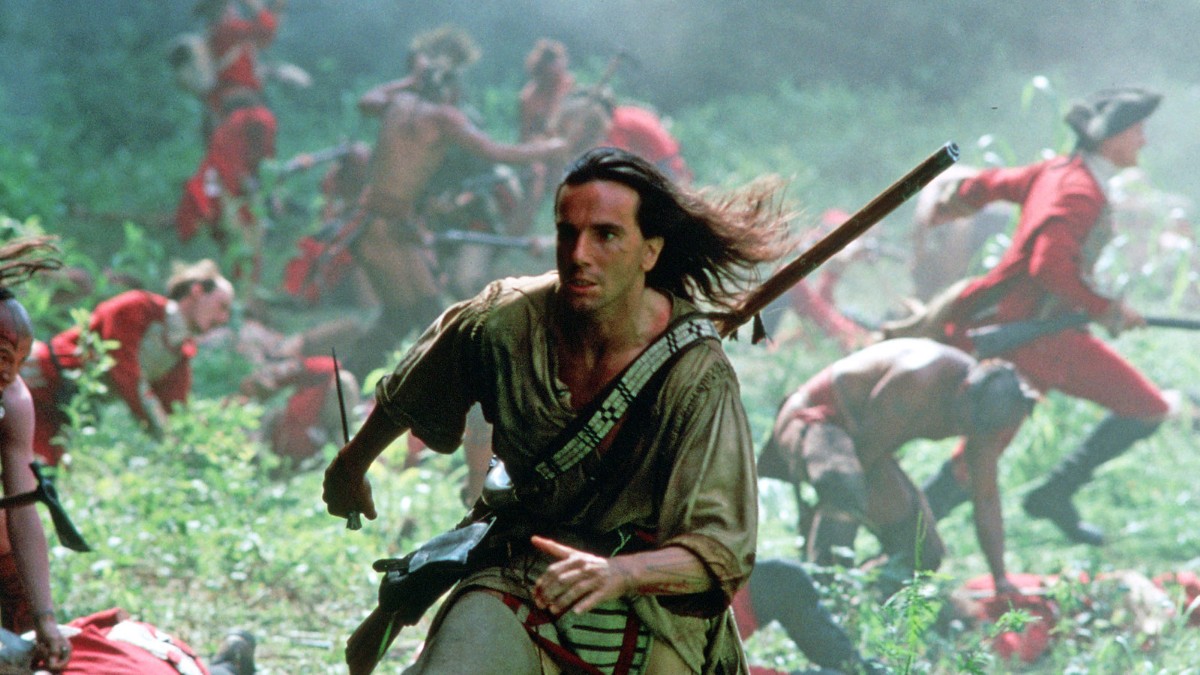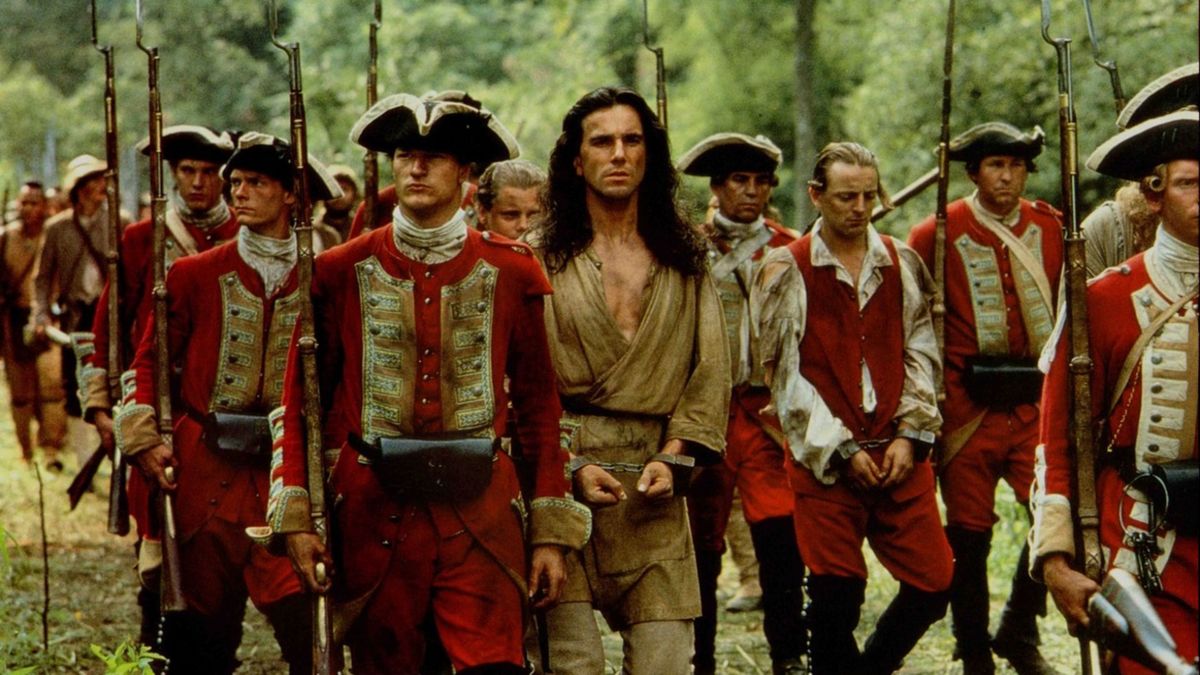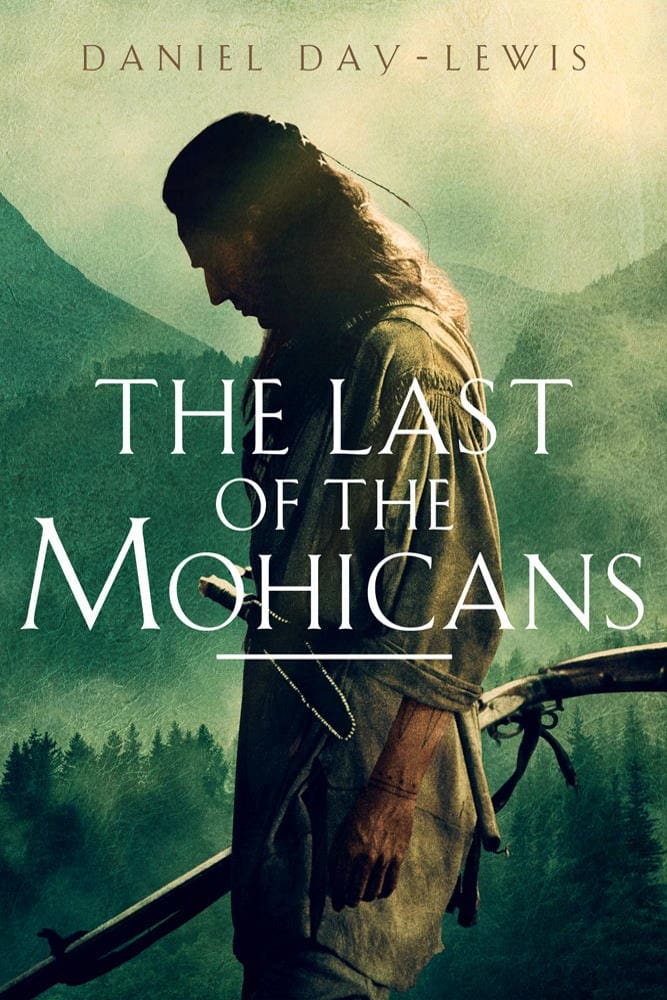What was once considered a 90s classic flounders in the years since.
There are people of a certain age that will remember this film with fond memories; as an epic romance overflowing with action and featuring a heroic turn from everyone’s favourite double-barrelled actor, but is that still the case after all these years? The Last of the Mohicans celebrated its 30th anniversary in September, and for a film about Native American culture (well, sort of) a subject that has been represented in a mixture of ways over the years – with some being more accepted than others – it begs the question: how does this “90s epic” fare after 30 years of stewing?

Since the golden age of cinema, the use of this setting and the Native American people has always brought up a question of morality within the industry – these types of films were laden with whitewashing, the people themselves labelled with the tag of a savage, or ruthless killers, and something needed to change. Two years before The Last of the Mohicans we were treated to 1990s Dances with Wolves, and the two films offered a fresh new aspect, and hopefully a more positive one. Native actors were now being hired and white actors were also performing in much more culturally appropriate roles for once – you could even say that these two films were a couple of trailblazers.
That being said though, Lewis’s character is an odd one when looking back at the film with hindsight, as are the people he calls “family.” Daniel Day-Lewis portrays Nathaniel “Hawkeye” Poe, a mysterious white Englishman who was abandoned by his parents and has since become the leader of a clan of native American mercenaries, who have allied with the British army during the French and Indian War. Of course, this is a fictional film, but there are still so many questions left unanswered. How did Hawkeye become the de facto leader of this group, with his own adopted father still in the picture? What did this group of warriors do which allowed them to be so respected by so many people? I just don’t have the answers, and it seems that Michael Mann didn’t either.
Daniel Day-Lewis is obviously fantastic – it’s not very often that he isn’t – and you can just imagine him being so method when preparing for the role of Hawkeye; running around the set with an axe in one hand and a replica gun in the other. The problem is that he’s the only character worth mentioning, and the only memorable one, the others become lost in the forests and disappear as easily as the wind. The film had so much potential to evoke life into the supporting characters, but instead, the decision seemed to have been made early on: point the camera at Lewis and don’t let anyone steal his thunder.
There is a strange aura that shrouds this film, maybe it’s the time that has passed, but it now comes across as being slightly old-fashioned. It’s almost as if the film has turned into a period piece over the years, with its slow pace, the obvious historical setting, and the bludgeoning love story that bubbles up from within and ultimately ruins everything being typical of that genre. It is always the case with these kinds of films that a romance between two star-crossed lovers starts to develop. How often have you heard this: the handsome, exotic man from the wilderness and a woman from the other side of the road become infatuated with one another? Not only does it fail to break new ground, but it also feels forced and very lethargic.
For its time, The Last of the Mohicans was considered monumental and didn’t do too bad in awards season either. Daniel Day-Lewis was nominated for the BAFTA Award for Best Actor in a Leading Role, but there was something that created a much larger buzz, and that was the win at the Oscars. As soon as the curtain was called on this film’s production, the Academy Award for Best Sound was seemingly wrapped up that year, and credit where credit is due, it is iconic. The score was composed by a quartet of talent and it’s easily the most prominent aspect of the entire film, especially the main title theme that was composed by Trevor Jones and Randy Edelman. It adds such an… oomph to proceedings, the dramatization is elevated, and the power that emanates from the score is what gives the film its true substance. To this day, it is the only film to have won an Oscar that was directed by Michael Mann, which is a little fact you can take back with you.

But it needs to be mentioned, as it’s one of the film’s biggest irks, and that’s the direction by Mann, which is very hit and miss. First things first though, the battle scenes are quite something; incredibly extravagant, full of excitement, and choreographed superbly – if not slightly over the top and unrealistic – but action is Mann’s bread and butter. Mann is also great at structuring the plot and slowly building it brick by brick before small bombshells are then released into the open. The tension steadily builds and the stakes become higher and higher – this has become Mann’s trademark, we saw it previously in Manhunter, and it’s also integral to his later films like the brilliant Heat and Inside Man.
Here’s the irk though, and it comes down to the film’s execution of vital moments. It’s very much a smash-and-grab formula; it’s 100 miles an hour, everything is sped up and just so… rushed. The love story, the action, the overall narrative, and the fact that the final ten minutes has so much action crammed into it that it completely contrasts the rest of the film – pacing like that could cause a heart attack, you know. Was there a need to smother the final part with so much action? Was the decision made because it makes the film more interesting and more memorable? I can’t help but compare it with Dances with Wolves because of the similarities in narrative and setting, but Dances with Wolves is far more refined and filled with a lot more subtlety than The Last of the Mohicans.
Looking back then, after all these years it’s hard to say that this film hasn’t been affected by time and a lot more than you would think as well. I was one of the many that remembered it as a truly epic tale of this superhero-like figure; a man of the people in the mould of Robin Hood who protects his own people That character is still there, and Daniel Day-Lewis absolutely nails what was asked of him, but it all seems a little bit too flowery, and dare I say it, extremely cheesy – it reeks of it, to be honest. It’s disappointing that the experience turned into this, but rewatching a film after 30 years is a surefire way to generate a completely new outlook, whether that’s a good or a bad thing.

No Comment.